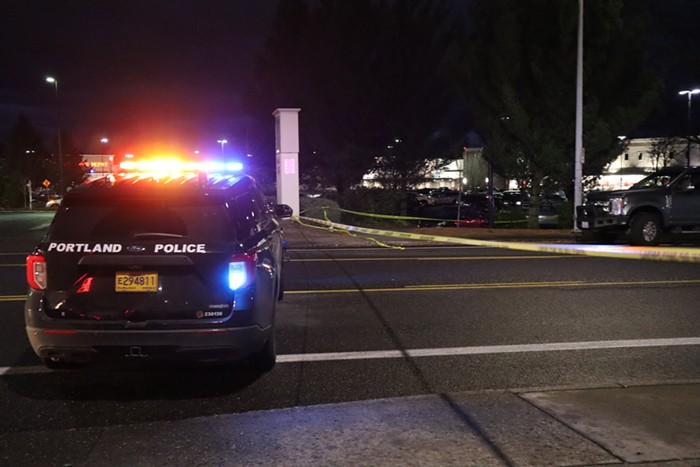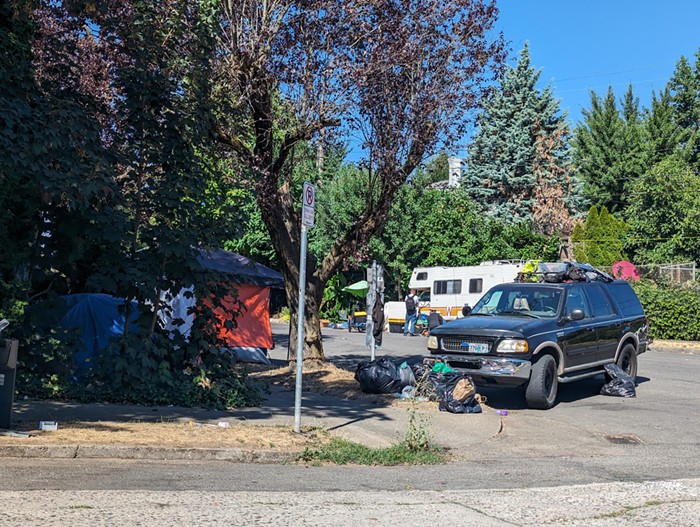THE MORRISON BRIDGE experiment has failed.
After months of studying how to repair the bridge's fast-deteriorating new deck, installed in 2011 and 2012, Multnomah County said on July 2 it has to replace the whole thing.
"An in-depth investigation confirmed that many panels were loosening and deteriorating," the county said in a statement that also announced the deck is "defective and cannot be effectively repaired."
That means looming closures for the 50,000 daily motorists that traverse the Morrison, probably beginning next year. What's more, the replacement work is expected to run millions more than the faulty deck cost to install. And that replacement comes with a bitter irony: It could be substantially similar to the steel grating the Morrison donned for more than five decades, before county leaders elected to clad it in a relatively new material called fiber-reinforced polymer, or FRP.
According to the company that designed it, the Morrison's FRP deck is the largest of its kind in the US. It's also the reason every trip over the bridge these days is set to a soundtrack of unsettling slapping sounds. Pieces of the Morrison deck have been cracking and coming undone almost since the new material was first used in 2012. And it's getting worse every day.
"The prudent thing is to start now," county spokesman Mike Pullen says of the replacement.
Officials are working on a deal to put $7.3 million in state funds toward the project—money originally intended for future improvements on the Burnside Bridge. That sum is roughly $2 million more than the cost of the failed polymer deck.
So how on earth did we get here?
When the Morrison's deck was replaced, officials said the existing steel grating had deteriorated and was slippery during wet weather. Whenever cars crashed, or very occasionally found their way from the bridge into the Willamette, this treacherous steel was sometimes blamed. So the county elected to go with the polymer—which officials praised as being lighter than steel, and offering better purchase for car tires.
"It had a lot of advantages, but the fact of the matter was it just wasn't the right material for this bridge," says Joe Yazbeck, a Portland attorney representing Conway Construction Company, the Washington State-based contractor that installed the deck. "The fact that they're going back to a metal system indicates that there isn't an FRP system that will work."
There were a lot of red flags. County engineers had a difficult time with FRP on the Broadway Bridge, where it's still used ["Water Under the Bridge?" News, Aug 21, 2013]. And as the Mercury's reported, county officials weren't aware of a 2009 study that suggested the polymer decking might be incompatible with a bridge like the Morrison ["The Tea Leaves," News, Sept 25, 2013].
On top of that, internal documents show officials noticed cracks and other worrying signs in the polymer decking panels even before they were attached to the bridge. But rather than rejecting the materials, the county used them, merely demanding a discount ["Fingers Crossed," News, Oct 16, 2013].
Since shortly after the Morrison reopened in 2012, companies involved in the deck project have been squabbling in court about who's to blame for the bridge's troubles. The county jumped into the fray last year, pretty much accusing everyone involved of shoddy workmanship. Tied up in the case: Conway, the primary contractor; North Carolina-based ZellComp, which designed and marketed the decking; and other suppliers and insurance companies with their toes in the deal.
"It's more than just installation involved," says Pullen, the county spokesman. "There's issues with both the installation and the material itself."
Trial in the suit is set for early 2015, perhaps around the time the Morrison, once again, gets a shiny new surface.



















